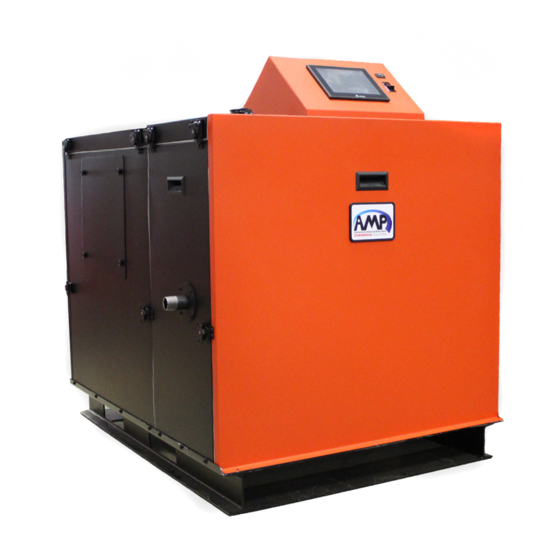Table of Contents
Advertisement
INSTALLATION, OPERATION,
AND MAINTENANCE MANUAL
Heating Boiler Models
AMP 1000
AMP 1250
AMP 1500
AMP 2000
Model: ______________________________________________
Serial Number: ______________________________________________
Installation Date: ______________________________________________
: __________________________________________
Heating Contractor
Thermal Solutions Products, LLC
Phone: 717-239-7642
Hot Water Supply
Boiler Models
AMP 2500
AMPW 2500
AMP 3000
AMPW 3000
AMP 3500
AMPW 3500
AMP 4000
AMPW 4000
1175 Manheim Pike, Lancaster, PA 17601
Save this manual for future reference.
WARNING: If the information in these
instructions is not followed exactly, a fire
or explosion may result causing property
damage, personal injury or death.
Do not store or use gasoline or other
flammable vapors and liquids in the vicinity
of this or any other appliance.
WHAT TO DO IF YOU SMELL GAS
• Do not try to light any appliance.
• Do not touch any electrical switch; do
not use any phone in your building.
• Immediately call your gas supplier
from a neighbor's phone. Follow the
gas supplier's instructions.
• If you cannot reach your gas supplier,
call the fire department.
Installation and service must be performed
by a qualified installer, service agency or the
gas supplier.
Email: orders@thermalsolutions.com
PN: 108588-01
REV. 6
www.thermalsolutions.com
Advertisement
Table of Contents


















Need help?
Do you have a question about the AMP 1000 and is the answer not in the manual?
Questions and answers